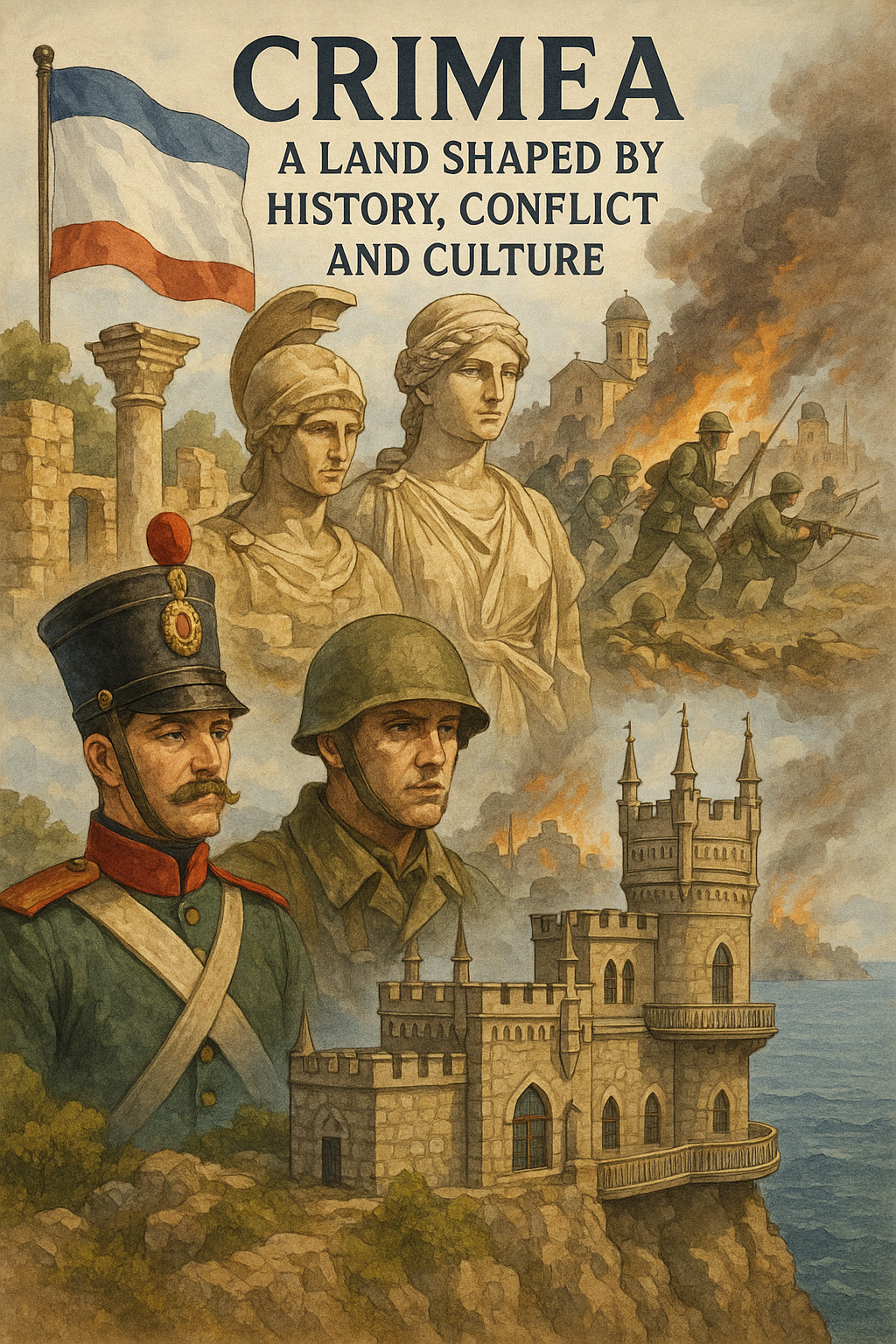
The Crimean Peninsula, located in the centre of the Black Sea, is a historically significant, politically contentious, and culturally diverse region. Known simply as Crimea, this area has drawn interest from all around the world in the last ten years, not only because of its picturesque coasts and historic sites, but also because of the ongoing geopolitical conflicts that shape its contemporary narrative.
A Crossroads of Empires
Crimea has long been a sought-after location. As early as the fifth century BC, Greek colonies flourished there, and later the Romans, Byzantines, Mongols, and Ottoman Empire used it as a strategic location for centuries. Following its victory over the Ottomans in the 18th century, the Russian Empire conquered Crimea. Crimea thereafter developed a close relationship with Russian military and political objectives.
As a naval station, the port city of Sevastopol in particular became extremely significant. It played a key role in both World War II and the Crimean War in the 1850s. In spite of its troubled history, Crimea gained popularity as a vacation spot during the Soviet era thanks to its pleasant climate, gorgeous mountains, and Black Sea beaches.
Soviet Legacy and the Transfer to Ukraine
The 1954 transfer of Crimea from the Russian Soviet Federative Socialist Republic to the Ukrainian SSR by Soviet Premier Nikita Khrushchev was arguably one of the most significant events in the region’s recent history. Since Russia and Ukraine were both members of the Soviet Union at the time, the action was primarily symbolic. But decades later, it would have significant ramifications.
Although Russia maintained use of its naval port in Sevastopol through a lease arrangement, Crimea became a part of the newly independent Ukraine after the USSR disbanded in 1991. Despite having a sizable ethnic Russian population and escalating hostilities between Russian-speaking citizens and Ukrainian authorities, Crimea remained largely stable for more than 20 years.
The 2014 Annexation
The year 2014 marked a sea change. Russia quickly established authority over Crimea after the Euromaidan uprisings in Ukraine and the overthrow of pro-Russian President Viktor Yanukovych. Key facilities were occupied by Russian troops without insignia, and in March 2014, a contentious referendum was held. Although Ukraine, the European Union, and the United States strongly denounced the process as illegal, official results showed that a majority of voters chose to join Russia.
One of the biggest geopolitical conflicts since the Cold War began when Russia swiftly grabbed Crimea. Ukraine deemed the action unlawful, and Western countries placed sanctions on Russia. The vast majority of the international community still views Crimea as a Russian-occupied region of Ukraine.
Life Under Russian Control
Crimean life has changed significantly after the takeover. Russia has made significant infrastructural investments, such as building the enormous Crimean Bridge that links the peninsula to the Russian mainland. Russian took over as the primary language in public life and schools, and the ruble replaced the hryvnia as the currency.
However, human rights issues have also been raised. Crackdowns on dissent have been documented by international watchdogs, especially among the Tatar community in Crimea, an indigenous Muslim group that has been harassed and arrested throughout Russian occupation.
Nowadays, Crimea is mainly isolated from global trade and diplomacy. There is little air travel, and the majority of Western businesses steer clear of conducting business there. Some locals claim that daily living has stabilised despite the remoteness, particularly with Russian pensions and subsidies. Others, however, lament the loss of liberties and the state of the economy.
Ongoing Tensions and the Future
The crisis in Crimea continues to be a hot spot in world politics, particularly in light of the larger war between Russia and Ukraine that intensified after the full-scale invasion in February 2022. As a military base for Russian operations, Crimea has been strategically important throughout the conflict. In recent months, missile strikes in and around Crimea have increased, and Ukraine has pledged to retake the peninsula.
Diplomatic answers seem elusive. Some contend that Crimea might ultimately serve as the basis for a peace agreement, while others view it as a symbol of sovereignty that is too significant for either side to give up.
Conclusion
Crimea has a rich past, a resilient populace, and an uncertain future, making it more than just a geopolitical hotspot. The world will continue to keep a watchful eye on it, regardless of whether it turns into a bridge to peace or stays a battlefield of interests. The events in Crimea serve as a reminder that politics and geography are intricately linked and that the past never truly goes away.
